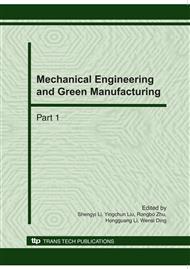p.1393
p.1397
p.1402
p.1406
p.1415
p.1421
p.1425
p.1431
p.1436
Research of Finite Element Simulation for Diesel Intake Port
Abstract:
In this paper, we study how the geometry of helical intake port of diesel engine influent air flowing conditions to reduce the complexity and difficulty of getting air flowing conditions by experiments. In numerical modeling, we import model of intake port into ANSYS software and do mesh processing on intake port in sections. We then analyze air flow based on working conditions, including difference of pressure between intake and exhaust port and lift-range. We deal with data by post-processing module in ANSYS and obtain velocity distribution and turbulence energy distribution of intake and exhaust port. Finally, we can predict the performance of intake port and find optimizations theoretically.
Info:
Periodical:
Pages:
1415-1420
Citation:
Online since:
October 2010
Authors:
Keywords:
Price:
Сopyright:
© 2010 Trans Tech Publications Ltd. All Rights Reserved
Share:
Citation:


